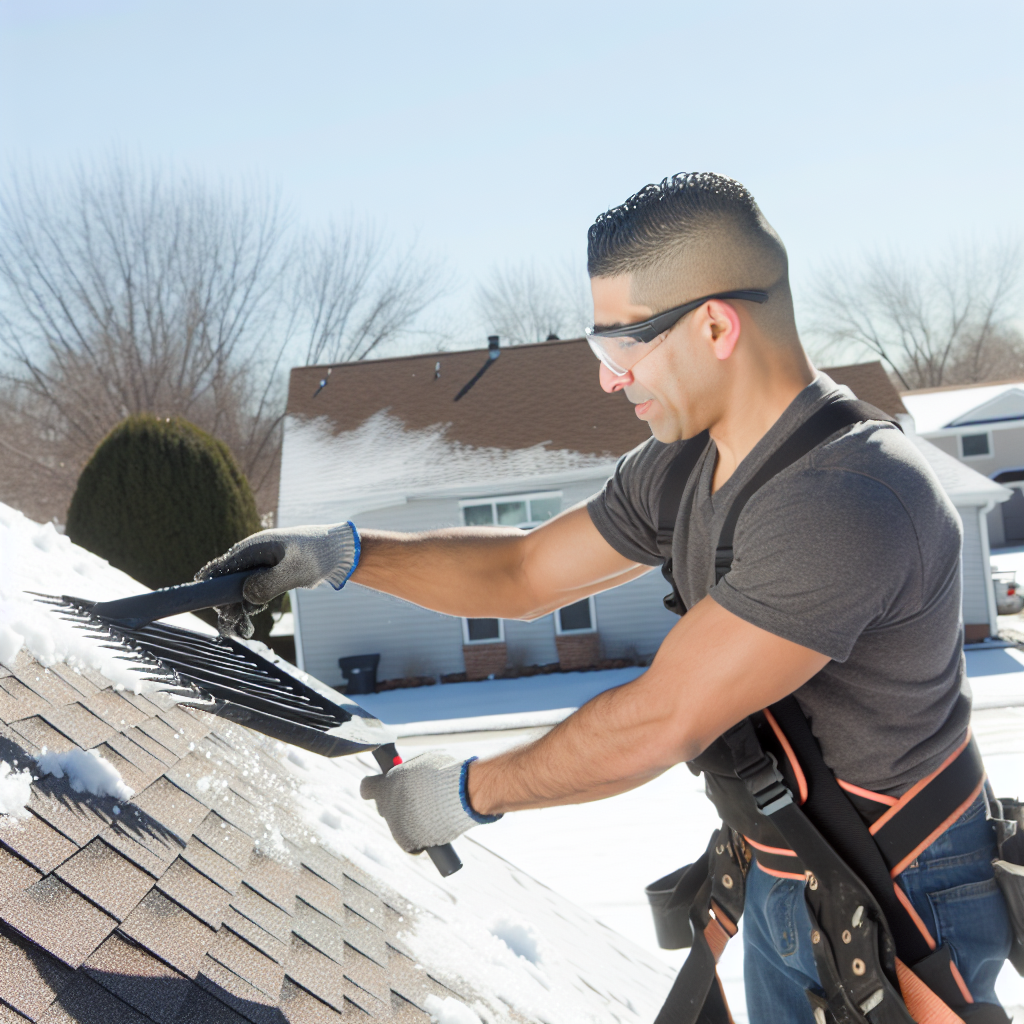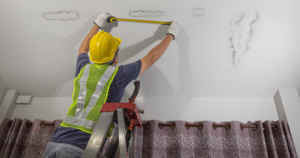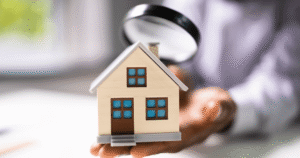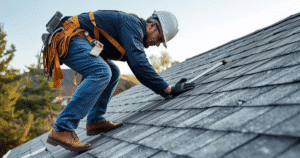Final Considerations for Roof Snow Management
Properly dealing with roof snow is more than a chore; it’s an investment in the longevity and safety of your home. The use of deicing products such as calcium chloride in targeted areas can be effective in managing ice build-up without damaging your roof—but it must be done wisely and sparingly. Always avoid the mistake of using rock salt, which can corrode metal components and harm plant life beneath the eaves. Adequate attic insulation and timely removal approaches act as a strong defense against the weight and risks of accumulated snow. Remember that prevention is better than cure when it comes to roof maintenance.
Tools and Tactics for Safe Snow Disposal
The tools you choose for snow removal are paramount to both your safety and the integrity of your roof. Opt for specialized roof snow removal tools that minimize direct contact and pressure on your roofing materials. Employ techniques that distribute your weight evenly and avoid making direct contact with the roof surface whenever possible. Although it may seem economical at first, using makeshift tools or methods can lead to costly damage and repairs. For homeowners not equipped or considering tackling this task alone, it’s advisable to seek out professional roofing services for peace of mind.
Trust in Professional Expertise and Services
Having a trusted professional inspect and maintain your roof before and after snow season can be invaluable for extending its life and preventing future issues. Although self-clearing might be tempting, professional roofers are versed in the best routes for snow removal, ensuring the entire process is handled with optimal care and efficiency. They can spot potential problem areas that may need more attention or repair, far beyond what the untrained eye might notice. By investing in a professional service, you’re not merely paying for the removal of snow—you’re investing in comprehensive roof health. Engage with companies like Ecobuild Roofing for a thorough assessment of your roof’s winter readiness.
Understanding the Urgency of Roof Snow Removal
With the serene beauty of a winter landscape comes the hidden threat to our homes—excessive snow piling up on our roofs. This seemingly harmless layer of white can weigh heavily, stressing the structural capacity of your home and potentially leading to disastrous collapses or leaks. It’s not simply a matter of aesthetics but one of safety and preservation of your property. As homeowners, recognizing the signs and knowing when to act is critical in the fight against potential damage. Acting swiftly before the snow builds up can mean the difference between a quick clear-up and facing a full-scale repair job.
Addressing the Frequency of Snow Removal
One of the most common concerns raised by homeowners is “How often should I tackle snow on my roof?” The answer isn’t always straightforward, as it involves considering the recent snowfall amounts, the weather forecast, and the unique structure of your roof. However, a rule of thumb is that if there’s more than a foot of heavy, wet snow, it’s time to take action—or if there’s any sign of sagging or leaks within your home. Keep in mind that small, consistent efforts to remove snow can prevent unwelcome surprises in the midst of winter’s worst.
The Ripple Effects of Snow Overload
Ignoring the issue of heavy snow doesn’t just risk the roof itself but can have a cascading effect on your home. Ice dams—an insidious issue where snow melts and then refreezes at the edges of your roof—can cause water to back up under shingles, damaging walls and insulation and even leading to mold and mildew problems. The long-term costs and structural issues that arise from neglected roofs during winter are both expensive and hazardous. Consider this: the minor inconvenience of regular snow removal pales in comparison to dealing with the aftermath of water damage and roof repairs. Ensure that your home remains a sanctuary against the chills of winter by placing roof snow removal at the top of your maintenance list.
Final Considerations for Roof Snow Management
Properly dealing with roof snow is more than a chore; it’s an investment in the longevity and safety of your home. The use of deicing products such as calcium chloride in targeted areas can be effective in managing ice build-up without damaging your roof—but it must be done wisely and sparingly. Always avoid the mistake of using rock salt, which can corrode metal components and harm plant life beneath the eaves. Adequate attic insulation and timely removal approaches act as a strong defense against the weight and risks of accumulated snow. Remember that prevention is better than cure when it comes to roof maintenance.
Tools and Tactics for Safe Snow Disposal
The tools you choose for snow removal are paramount to both your safety and the integrity of your roof. Opt for specialized roof snow removal tools that minimize direct contact and pressure on your roofing materials. Employ techniques that distribute your weight evenly and avoid making direct contact with the roof surface whenever possible. Although it may seem economical at first, using makeshift tools or methods can lead to costly damage and repairs. For homeowners not equipped or considering tackling this task alone, it’s advisable to seek out professional roofing services for peace of mind.
Trust in Professional Expertise and Services
Having a trusted professional inspect and maintain your roof before and after snow season can be invaluable for extending its life and preventing future issues. Although self-clearing might be tempting, professional roofers are versed in the best routes for snow removal, ensuring the entire process is handled with optimal care and efficiency. They can spot potential problem areas that may need more attention or repair, far beyond what the untrained eye might notice. By investing in a professional service, you’re not merely paying for the removal of snow—you’re investing in comprehensive roof health. Engage with companies like Ecobuild Roofing for a thorough assessment of your roof’s winter readiness.
Expert Guidelines for Effective Roof Snow Management
Tip 1:
Regularly inspect your roof after heavy snowfall. It’s essential to monitor snow accumulation and understand when it’s time for removal to prevent stress on your roof structure.
Tip 2:
Utilize the right tools for snow removal such as a roof rake or push broom designed for roof work. These can help clear snow without causing damage to your shingles or roofing material.
Tip 3:
Be proactive in preventing ice dams by ensuring proper attic insulation and ventilation. This helps maintain a consistent roof temperature and prevents the thaw-refreeze cycle that contributes to ice dam formation.
Tip 4:
Consider hiring a professional for roof snow removal if the amount is significant or if you’re not comfortable with doing it yourself. Professionals have the appropriate equipment and experience to handle the job safely.
Tip 5:
Apply calcium chloride or magnesium chloride ice melt products in a stocking or mesh bag laid over ice dams to gradually melt them. Do not use rock salt, as it can damage roof materials and plants below.
Your Roof Snow Removal Questions Answered
How Often Should I Remove Snow From My Roof?
It’s generally recommended to remove snow from your roof after every significant snowfall or when there’s more than a foot of accumulation. Regular removal helps prevent the stress of heavy snow loads and reduces the risk of damage.
What Are the Safest Methods for Snow Removal on My Roof?
The safest methods for roof snow removal include using a roof rake with a long extension to clear snow from the ground, or employing a plastic shovel to gently remove snow without damaging shingles.
Can Removing Snow Prevent Ice Dams on My Roof?
Yes, regular snow removal is key to preventing ice dams. It stops snow from melting and refreezing at the roof’s edge, where ice dams typically form.
What Tools Are Best for Residential Roof Snow Removal?
The best tools for residential roof snow removal are a roof rake for low-pitched roofs and a snow roof shovel or pusher for higher-pitched roofs designed to be gentle on your roofing materials.
Do I Need a Professional for Roof Snow Removal Services?
While some homeowners can safely remove snow themselves, hiring a professional is advised for steep, high, or complex roofs, or when the snowfall is excessive and poses a risk to personal safety.







